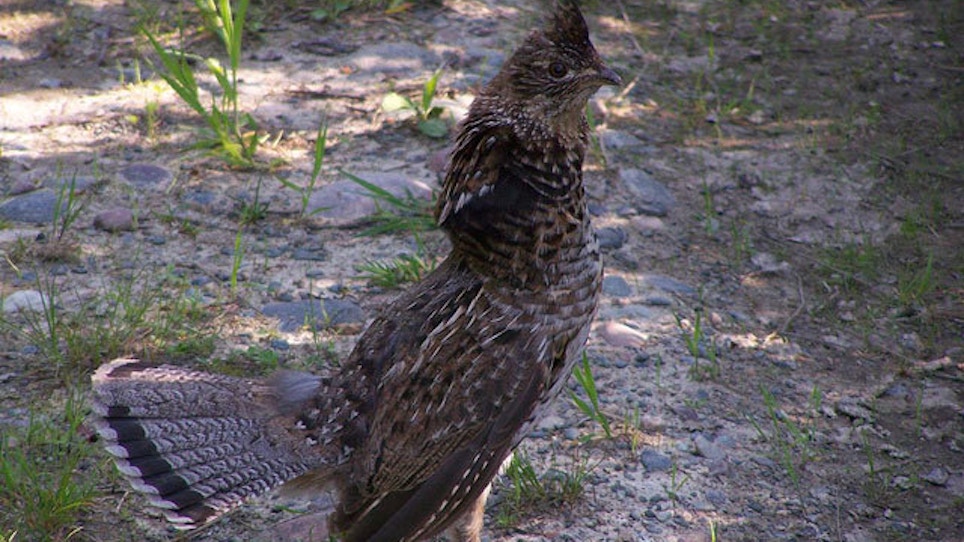Coraopolis, PA — The Ruffed Grouse Society’s National Ruffed Grouse and Woodcock Hunt (NGWH) is conducted during the second week in October each year in and around Grand Rapids, Minnesota. This world-class event is sponsored and coordinated by the Grand Rapids Chapter of the Ruffed Grouse Society whose volunteers contribute literally thousands of hours of their time to make the NGWH happen.
The NGWH provides an unparalleled opportunity to study the population ecology of ruffed grouse and woodcock. The manner in which it is structured is what makes it so unique in the field of wildlife research and so valuable to wildlife conservation. The late Gordon W. Gullion, universally acknowledged as the world’s expert on ruffed grouse, immediately recognized the scientific potential of the NGWH when the event was first held in 1982. Gullion understood that because it is conducted in the same locale, at the same time each year and using the same methods, it provides an outstanding opportunity to study the annual variation of the local ruffed grouse population and how that variation relates to the 10-year cycle.
The 33rd annual NGWH was conducted on October 9 and 10, 2014, and the weather conditions for both days were quite favorable for hunters which is rare for the NGWH. While Minnesota’s 2014 ruffed grouse spring drumming survey documented a significant increase over the 2013 survey, the ruffed grouse and American woodcock harvest at the 2014 NGWH were similar to last year.
In 2014, each hunter harvested an average of 1.07 grouse per day; the average daily harvest in 2013 was 1.06 grouse. The 2014 woodcock harvest was down from that achieved in 2013. This year, each hunter harvested an average of 1.8 woodcock per day; the average daily harvest in 2013 was 2.03 woodcock.
Physical examination of grouse and woodcock harvested at the NGWH demonstrated that the 2014 spring conditions may have affected local populations. “The drop in reproductive success for both ruffed grouse and woodcock was expected given the delayed, wet and cool spring that northern Minnesota experienced this year," said RGS Director of Conservation Policy Dan Dessecker. In addition, the proportion of immature birds harvested in 2014 was 10 percent below the long-term average for ruffed grouse and 20 percent below for woodcock.
Ruffed grouse populations in northern Minnesota, and elsewhere throughout the northern portions of the grouse range, exhibit a cycle of approximately 10 years. Cyclic lows typically occur in years ending in “4” or “5”. These lows are followed by four to five years of increasing populations toward the cyclic high, which typically occurs in years ending in “9” or “0”. Four to five years of subsequent population declines lead to another low, and the cycle again begins.
These population cycles have been documented in Minnesota for over 60 years. Not surprisingly, the ruffed grouse harvest at the NGWH shows a strong correlation with the ruffed grouse population cycle in northern Minnesota. During cyclic highs, each hunter at the NGWH will harvest 2.0 to 2.5 ruffed grouse each day during the two-day event. Daily harvest-per-hunter during cyclic lows is only 0.6 to 1.0 grouse.
Like ruffed grouse, the harvest of American woodcock at the NGWH is related to trends in Minnesota’s woodcock population. Since 1997 when the woodcock daily bag limit was reduced from five birds to three, NGWH participants have harvested on average one to two woodcock per day.
In total, the 50 teams at the NGWH (two hunters per team) will harvest approximately 200 to 400 ruffed grouse and 300 to 400 woodcock. Although these totals may seem quite large, this harvest is in reality merely a drop in the bucket as it is distributed over almost 8,000 square miles of public and private land.
For over 30 years, the NGWH has provided invaluable insight into the ecology of these two premier game birds. The Ruffed Grouse Society will continue to ask questions and, hopefully, find answers through the NGWH that will help secure the future for ruffed grouse, American woodcock and the sportsmen and women who hold them so dear.






